How is Monster Hunter Stories 2 different from a mainline Monster Hunter game?
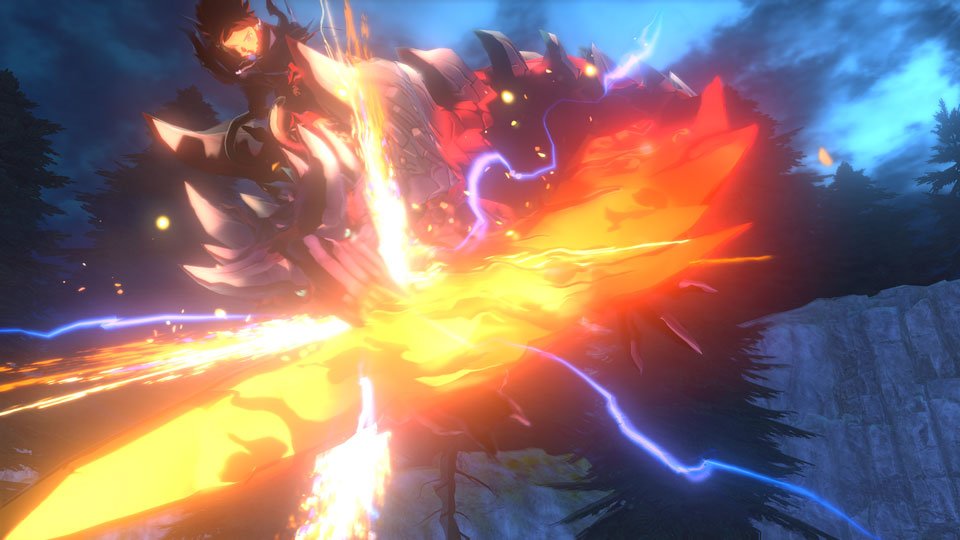
Monster Hunter Stories 2: Wings of Ruin is a vastly different game compared to a mainline Monster Hunter title, such as Monster Hunter Rise. The mainline Monster Hunter games are action-RPGs where you indiscriminately hunt down every monster that comes your way. On the other hand, Monster Hunter Stories 2: Wings of Ruin is a turn-based JRPG where you befriend monsters and team up with them to defeat evil monsters.
But that's not the only difference between the two, there's more. Today, we're going to highlight all the aspects that makes Monster Hunter Stories 2: Wings of Ruin on the Nintendo Switch different from a mainline Monster Hunter game.
What makes Monster Hunter Stories 2 different? Story and setting
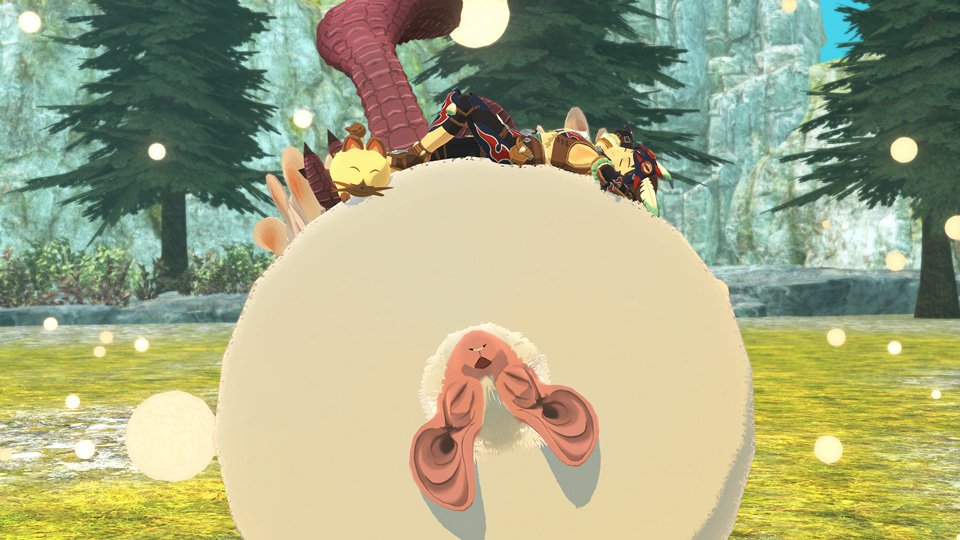
Since Monster Hunter Stories 2: Wings of Ruin is a JRPG, it has a heavier focus on telling a story than the mainline games. A mainline Monster Hunter game's plot is usually a simple, episodic tale where an unstoppable predator comes by to disrupt the ecosystem, and you must defend your home from it. By contrast, The plot of a Monster Hunter Stories title has you traveling the world to solve a mystery that could impact the entire world and develop friendships with monsters and NPCs along the way.
The setting of Monster Hunter Stories 2: Wings of Ruin has you assume the role of a Monster Rider. Riders strive to preserve the balance of nature by working together with monsters instead of hunting them like Monster Hunters. Although, Riders will slay monsters if they have no other choice when their friends' lives are on the line.
What makes Monster Hunter Stories 2 different? Gameplay
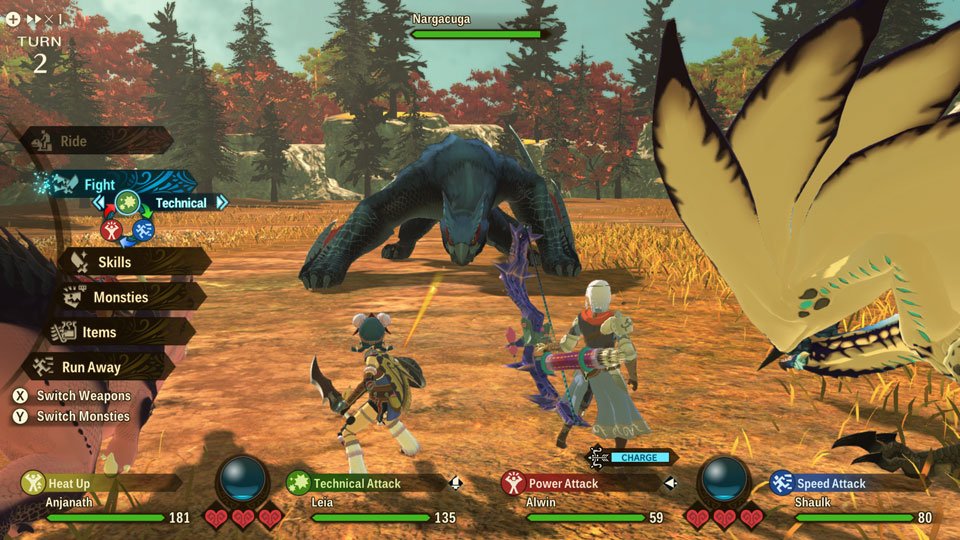
As mentioned earlier, the combat in Monster Hunter Stories 2: Wings of Ruin is turn-based, where you and your partner monster (or Monstie for short) fight one or multiple monsters at once. For the most part, combat has most of the tropes of a turn-based JRPG. You take turns fighting the monster, you exploit an enemy's weaknesses with elemental attacks or status ailments, and you use healing items to keep your team alive during the battle. It starts to get different when you discover attack types and learn how to command your Monstie.
Every move has an attack type attached to them, and this game has three of them — Power, Technical, and Speed. When you attack a monster that's targeting you, you can engage in a Head-to-Head battle where your move's attack type must beat the opponent's attack type, like a game of rock-paper-scisscors. If your move's attack type beats theirs, the monster will take double damage and vice versa. These are the attack types that counter each other — Speed beats Power, Power beats Technical, and Technical beats Speed.
If you and your Monstie both use an attack type that beats the opponent's, you perform a Double Attack. Double Attacks not only deal more damage than a regular attack, but it also cancels out an enemy's turn.
Master your iPhone in minutes
iMore offers spot-on advice and guidance from our team of experts, with decades of Apple device experience to lean on. Learn more with iMore!
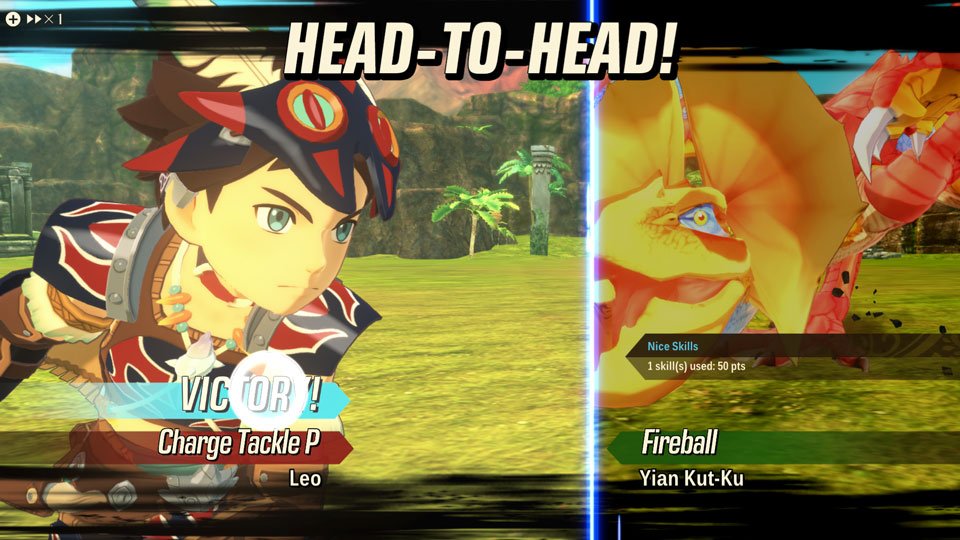
If you win enough Head-to-Heads, you can knock the monster over and kick it while it's down. Every time you win a Head-to-Head, deal damage or heal a Monstie, you fill-up the Kinship Gauge. The Kinship Gauge is a meter that you use to perform special moves or ordering your Monstie. Monsties act on their own accord during a fight, but if you spend some of the Kinship Gauge, you can command it to perform special moves.
When the Kinship Gauge is maxed out, you can ride your Monstie as a cavalry unit. While riding a Monstie, your stats increase dramatically, and you can perform your Monstie's ultimate attack if you win enough Head-to-Heads.
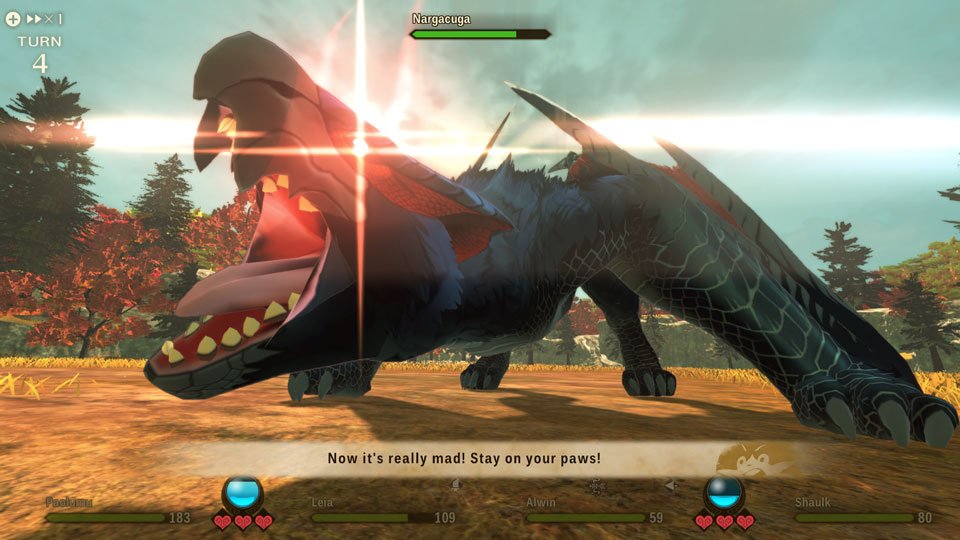
So far, you may think Monster Hunter Stories 2: Wings of Ruin is entirely different from the mainline games. However, there are some gameplay mechanics from the main games that are present in this game. For example — during certain boss fights, you can target a monster's body parts to cripple their abilities and if you damage a monster enough, it will get enraged and become much more dangerous to deal with.
Another gameplay aspect from the mainline games that Monster Hunter Stories 2: Wings of Ruins retains is learning your enemy's attack patterns and countering them. In the mainline Monster Hunter games, you would need to learn what a monster's attack animations are so you would know when to dodge or block them.
However, you can't dodge on command all the time in a turn-based JRPG like you could in an action RPG. So, to compensate for this, monsters in the Monster Hunter Stories 2: Wings of Ruin have attack patterns where they perform specific attack types in a row. Learning what their patterns are and countering them with the correct attack types is the key to mastering the combat system. And if you get good enough, you could potentially prevent a monster from attacking at all by countering all of their moves.
What makes Monster Hunter Stories 2 different? Character progression
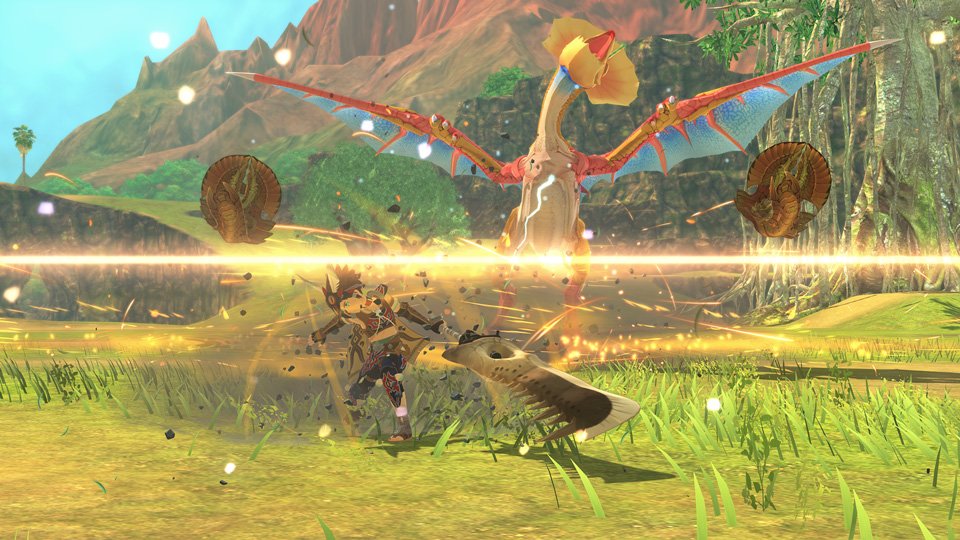
At the time of this writing, we don't know exactly how the character progression systems will play out in Monster Hunter Stories 2: Wings of Ruin. However, we can look at the first game to come up with a guess.
When you defeat a monster, you obtain its body parts and use them to forge equipment. In the first Monster Hunter Stories, forging and wearing equipment was a lot more streamlined than the mainline games. In a mainline game like Monster Hunter Rise, you can forge each piece of an armor set and create mixed armor sets to give your Hunter powerful armor skills.
In Monster Hunter Stories 1, however, you can only craft armor sets and only wear armor sets. No mixing individual armor pieces to create mixed sets are allowed for a Monster Rider. Riders in Monster Hunter Stories also lack the huge variety of weapons that Hunters get in a mainline title. In a mainline Monster Hunter game, Hunters get access to 14 different weapon types, whereas Monster Hunter Stories 1 only had four weapon types, and Monster Hunter Stories 2: Wings of Ruin has six (so far).
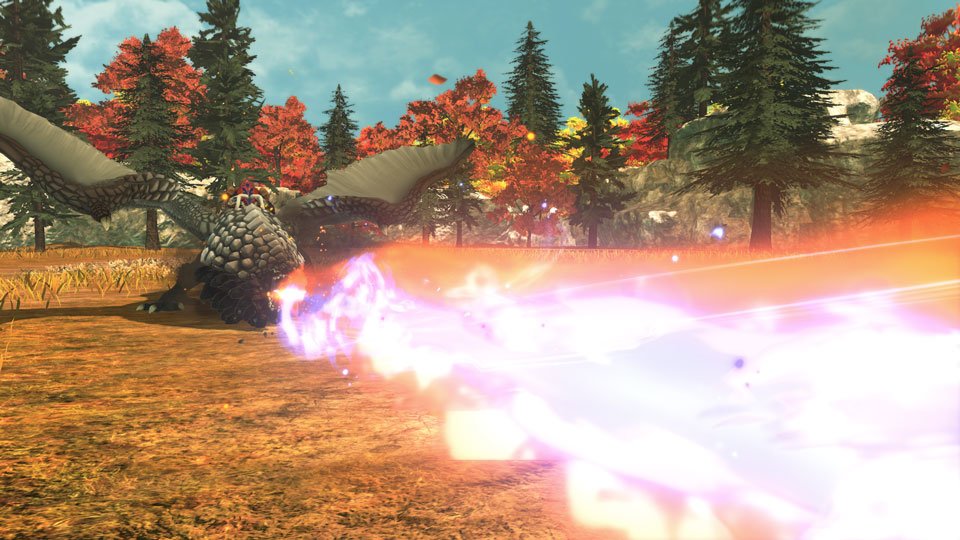
This is because the character progression system in Monster Hunter Stories 1 was mainly focused on upgrading your Monsties. The first game had a mechanic called the Rite of Channelling and it that allowed you to take the genes of a Monstie and implant them into another. These genes can grant Monsties new abilities, new moves, stat boosts, and even change their appearance.
For example, I could take the genes of a Rathalos that allowed it to breathe fire and implant them into a Diablos. Then I would implant the genes of a Rathian into that same Diablos to give it the ability to inflict poison. The resulting creation would be a fire-breathing Diablos that could poison you every time it gored you with its now poisonous horns, and that is just one example of this gene-splicing system. Monster Hunter Stories allowed you to create dozens of unique variants of monsters that you would never see in a mainline Monster Hunter game. I love this system, and it has recently been confirmed that it will return for the sequel.
What makes Monster Hunter Stories 2 different? Multiplayer
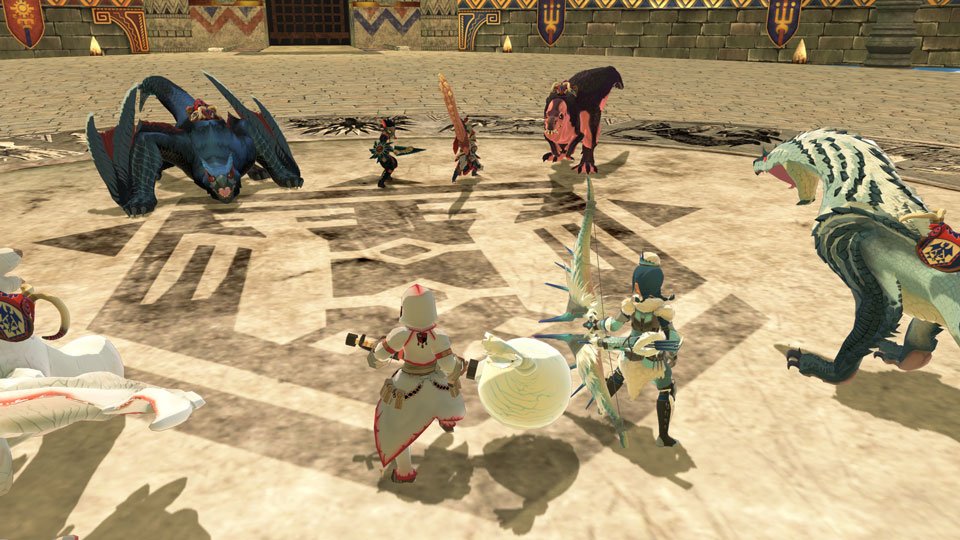
When it comes to the multiplayer aspects of Monster Hunter Stories 2: Wings of Ruins, there are more options to choose from compared to a mainline Monster Hunter game. In mainline Monster Hunter games, the multiplayer mode is co-op only and has you form a party of up to four players to take on Gathering Hub quests. Monster Hunter World: Iceborne was an exception because in that game, any quest can be done with co-op, so long as every player watched the quest's cutscenes first.
In Monster Hunter Stories 2: Wings of Ruin, there is a co-op mode and a PVP mode. The co-op mode supports up to two players, and you go on expeditions to fight challenging monsters you wouldn't find in the single-player campaign. The PVP mode has you fight against other players with their Monsties in 1v1 or 2v2 battles.
Are you ready to ride into battle with your Monsties?
As you can see, the Monster Hunter Stories series has many differences that set it apart from the mainline games, and It's these aspects that made the first game so much fun back on the Nintendo 3DS. From what Capcom has shown so far, Monster Hunter Stories 2: Wings of Ruin is looking to take everything that made the first game great and make it even better.
Monster Hunter Stories 2: Wings of Ruin will be released for the Nintendo Switch and PC on 9 July, 2021 for $60. Make sure to grab a great microSD card for your Nintendo Switch so you have enough space to download it when it launches. Ride on!
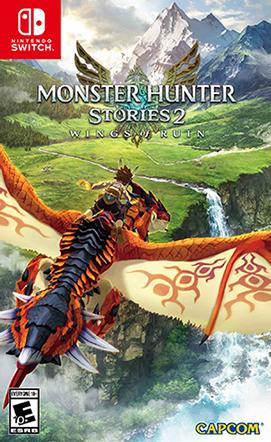
Form bonds with monsters and save the world.
One day, a young Wyverian girl warns you that the Rathalos are mysteriously disappearing at an alarming rate and she asks for your help to save them. Depart on an epic quest to find the missing Rathalos, develop your skills as a Monster Rider, and uncover the secrets behind the Wings of Ruin.
Alexander Cope is a writer for Windows Central and iMore that has been gaming since the 16-bit era.

